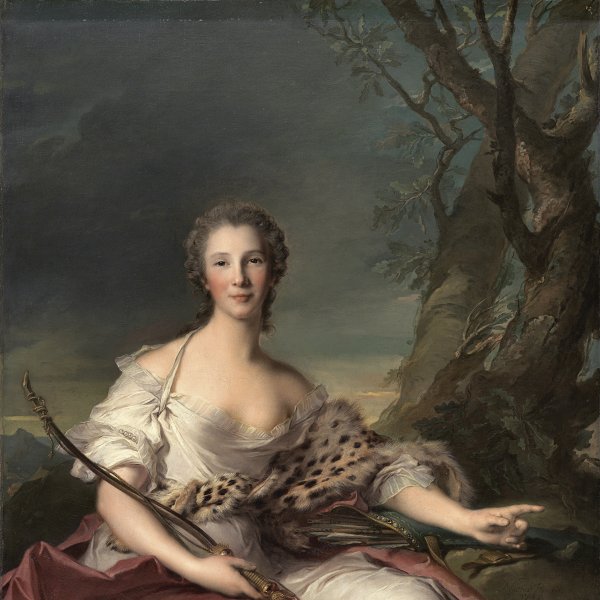Jean-Marc Nattier
Paris, 1685-1766
Member of a family of artists, Nattier’s father was the portrait painter Marc Nattier and his mother the miniaturist Marie Nattier. Jean-Marc began his studies with his father and then continued with his grandfather, Jean Jouvenet, before attending classes at the Académie Royale. Around 1703 he was to be found in the Galerie of the Palais du Luxembourg, copying works by Rubens and Charles Le Brun. On the recommendation of Jouvenet he was awarded a place at the French Academy in Rome, which he turned down. In 1717 he travelled to Holland where he painted portraits of Peter the Great and the Empress Catherine (Hermitage, St. Petersburg). Pleased with his work, the Tsar offered him a position at the court, which Nattier again declined in order to remain in Paris, where he lived and worked for the rest of his life.
Nattier entered the Académie royale in 1717 with Perseus showing the head of Medusa (Musée des Beaux-Arts, Tours). His preferred theme was the female, allegorical portrait, for example, Madame de Lambesc as Minerva with the Count of Brionne (Musée du Louvre, Paris). Nattier began to enjoy great popularity among the French aristocracy from the 1730s and from 1742 received his first commissions from the royal family. They included the portraits of the daughters of Louis XV, Madame Henriette as Flora and Madame Adélaïde as Diana for the palace at Versailles. In 1747 his daughter married the painter Louis Tocqué, with whom Nattier worked. Although he painted one of his most ambitious works in 1755, the full-length portrait of Madame Henriette playing the Viola (Versailles), Nattier’s fame and success gradually diminished during the latter years of his career.
Nattier entered the Académie royale in 1717 with Perseus showing the head of Medusa (Musée des Beaux-Arts, Tours). His preferred theme was the female, allegorical portrait, for example, Madame de Lambesc as Minerva with the Count of Brionne (Musée du Louvre, Paris). Nattier began to enjoy great popularity among the French aristocracy from the 1730s and from 1742 received his first commissions from the royal family. They included the portraits of the daughters of Louis XV, Madame Henriette as Flora and Madame Adélaïde as Diana for the palace at Versailles. In 1747 his daughter married the painter Louis Tocqué, with whom Nattier worked. Although he painted one of his most ambitious works in 1755, the full-length portrait of Madame Henriette playing the Viola (Versailles), Nattier’s fame and success gradually diminished during the latter years of his career.





